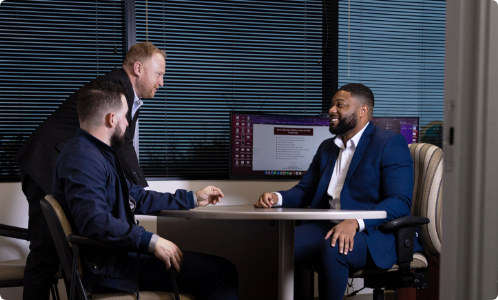Santa Monica Tax Preparation: Dollars & Dangers Most Locals Never See in 2025
What if your greatest Santa Monica tax liability isn’t what you think? Plenty of residents, business owners, and investors trust software or generic CPAs—yet end up missing hidden California credits, city-specific deductions, and new 2025 IRS rules. The truth: prepping your taxes in Santa Monica is more complex than most realize, and one wrong move can cost thousands every single year.
This guide reveals exactly why Santa Monica tax preparation must go far beyond filling out a 1040. With local compliance hurdles, constantly shifting California codes, and unique urban and business rules, the right moves can put more cash in your pocket—while the wrong ones can trigger audits, overpayments, or even FTB fines. Here’s what sets Santa Monica apart in 2025—and how to protect every dollar, no matter your persona or income.
The smartest approach to Santa Monica Tax Preparation starts by treating the city like its own tax jurisdiction within California. The IRS may only care about your federal filing, but the Franchise Tax Board and Santa Monica’s Finance Division each impose reporting and licensing standards that directly affect your deductions. A professional review should include city license verification, FTB conformity checks, and a Schedule C or K-1 tie-out—steps most software and national firms skip entirely.
Quick Answer: In 2025, smart Santa Monica tax preparation means stacking new California credits, carefully claiming commuter and local property deductions, optimizing your business entity for FTB requirements, and proving residency status—moves that routinely yield $2,000–$9,000 in overlooked savings for W-2 employees, 1099s, LLCs, and investors.
This information is current as of 10/6/2025. Tax laws change frequently. Verify updates with the IRS or FTB if reading this later.
The Tax Landscape in Santa Monica: What Most Residents Miss
The #1 error? Most Santa Monica residents believe tax season is just about the federal return. But what trips up locals, in reality, is California conformity laws, Santa Monica–specific business license rules, and a set of property and energy credits no off-the-shelf platform will catch.
- Commuter Tax Incentives: If you ride the Metro or use employer-provided mass transit, you’re eligible for up to $1,200 annually in federal/California commuter benefits. Many miss this deduction due to poor employer reporting or lazy prepping.
- Hybrid and Remote Work Deductions: California remains tough, but even as a W-2, you can claim partial home office expenses if you’re required to work from home—especially with the 2025 IRS expanded safe harbor. Check IRS Publication 587 for details.
- Local Clean Energy and EV Credits: Rebates and credits for solar, electric vehicles, and sustainable home upgrades can offset up to $2,500 of your 2025 tax liability.
- City License Tax: Santa Monica requires annual city business license filing—even for solopreneurs and freelancers—which can be deductible but is often forgotten. Fines can reach $900 if ignored.
Bottom line: If your CPA isn’t asking about Mello-Roos, commuter expenses, and Santa Monica’s high-rent impacts, you’re overpaying.
Savings Moves for Every Persona: Smart Strategies Santa Monica Filers Need in 2025
For W-2s and Salaried Families
- CA Earned Income Tax Credit (CalEITC): If you make under $30,000, you may qualify for a refundable California credit—worth up to $3,529 per household in 2025. For moderate-income families, layering that with the new Young Child Tax Credit puts $1,000 more in your refund.
- Rent Deduction Play: California does not generally allow rent deductions, but, for qualifying W-2s with partial home offices—and with tight tracking—you can still deduct a pro-rated portion of rent for home office use under IRS rules. Most renters miss this due to documentation slip-ups.
- Child and Dependent Care Credit: You can claim up to $3,000 in qualified expenses for one dependent (or $6,000 for two or more)—be sure your after-school or summer camp expenses are substantiated.
For 1099 Contractors, Freelancers, and Small Biz
- LLC or S Corp Optimization: Santa Monica imposes a gross receipts tax via the city license system. For LLC/1099s with gross income over $100,000, proper entity structuring—especially S Corp election—can slash $7,400+ in franchise and self-employment tax compared to default Schedule C status. If you’re not reviewing this annually, you’re flat-out leaking cash.
- QBI Deduction Leverage: Owners of pass-through entities in 2025 can take a 20% deduction on net income, but only if wage and asset tests are met. Many local CPAs miss real estate or wage cost allocation opportunities that make the difference between $0 and $9,000 in Section 199A savings. See IRS Publication 535.
- Property Tax and Mello-Roos Nuance: These local taxes are often 100% deductible if properly classified as a property expense, but are non-deductible in certain short-term rental and business cases. Expert classification based on your use case is key.
KDA Case Study: Santa Monica Freelancer Flips a $2,200 Overpayment
When Jamie, a self-employed copywriter living near Ocean Park, brought her books to KDA in March 2025, she’d accepted that high state taxes and a simple Schedule C return were “just the Santa Monica price.” But our intake found three missed opportunities: she’d failed to deduct home office costs (home shared with a roommate), misunderstood the difference between itemized and standard deductions, and never claimed the city business license as a legitimate expense. Jamie’s records showed $18,400 in self-employment revenue and $17,650 in actual deductible business and personal flowing expenses (after pro-rata adjustments). By recomputing her business use of home (220 sq ft), fixing her dependent care substantiation, and amending to claim her missed city license and commuter expenses, Jamie’s refund went up by $4,800. Her total prep/review fee was $1,450—yielding a net 3.3x ROI even after accounting for city license back fees. Her response: “I finally feel like tax season is working for me, not against me.”
Ready to see how we can help you? Explore more success stories on our case studies page to discover proven strategies that have saved our clients thousands in taxes.
Red Flags, Audit Triggers, and What the IRS Wants for Santa Monica Filers
Audit risk is higher in urban California—especially if you’re switching from W-2 to 1099 status or you own property. Here are critical traps in Santa Monica:
- Failure to File City Business License Returns: Many residents overlook this, resulting in fines. Document licensing, pay proactively, and deduct the expense.
- Mello-Roos and Parcel Tax Classification Errors: The line between deductible property tax and non-deductible assessments is razor-thin. Double-check your “property tax” line isn’t padded by non-qualified assessments; otherwise, the IRS will deny the deduction (and FTB may impose a penalty through Form 100/568 reviews).
- Improper Home Office Claims for Renters and Homeowners: Many locals overstate square footage or usage basis. Your home office must be exclusively used for business, per IRS Publication 587. If you’re ever audited, expect to prove this with sketches, photos, and utility bills—not vague estimates.
Red Flag Alert: If you work hybrid between home and a designated corporate office, you cannot take a home office deduction unless required by your employer and it’s your principal place of business. Fudging this risks both federal and state audits.
Pro Tips, Myths, and Fast FAQ Block
Pro Tip: Santa Monica’s green business portal offers rebates for energy upgrades and sustainable business practices—some of which double as California state or Fed-level deductions when properly documented. Always check eligibility with energy retrofits and keep concurrent receipts.
Myth Buster: “You can’t deduct rent if you’re a W-2 worker.” False—if you are required to work from home for the convenience of your employer, document your workspace, and calculate allocation using square footage and days worked. For 2025, the IRS remains strict, but certain city, state, and employer policies qualify.
FAQs Every Santa Monica Taxpayer Should Ask in 2025
Can I claim a commuter benefit if my employer doesn’t provide it?
No, California and IRS require employers to set up pre-tax commuter benefits programs for employees to claim the deduction. However, for 1099s, these costs may be claimed as business expense on Schedule C or E, where allowed.
Do I need to show proof of residency for Santa Monica-specific taxes?
Yes, both the city and California FTB check residency for certain credits, business taxes, and fee waivers. Keep utility bills, lease agreements, vehicle registrations, and (if applicable) children’s school records as documentation. In an audit, failure to prove local residency can void key credits.
What if I miss filing a city license or pay late?
Most city license nonfilers get caught by CA’s Franchise Tax Board cross-check. Penalties start small, but unpaid balances compound. You can often abate penalties on first-time errors—KDA frequently negotiates waivers for clients who proactively fix their filings rather than wait for the FTB letter.
Does claiming the home office deduction trigger an automatic audit?
No, but it increases scrutiny. In 2025, the IRS expanded the “safe harbor” option for home office, allowing a $5/sq ft deduction up to 300 sq ft—no receipts required, just a written diagram and business use substantiation. This is ideal for tech, creative, and consulting professionals in Santa Monica with limited space.
Pro Tip: Use the IRS Simplified Option to claim $5/sq ft for your home office—no receipts required. See guidance in IRS Publication 587.
The IRS isn’t hiding these write-offs—you just weren’t taught how to find them.
Ready for a Real Strategy? Book Your Santa Monica Tax Session
Still relying on last year’s cookie-cutter approach—or worried your Santa Monica tax preparation is missing out? The best time to fix leaks in your strategy is before you file. Our team at KDA will conduct a full refund check, custom deduction hunt, and Santa Monica/Federal compliance review—so your refund and peace of mind are both locked in for 2025.
Book Your Santa Monica Tax Review Now
Don’t gamble with compliance or lose $2,000+ in overlooked credits just for living and working in Santa Monica. Book your tax review consultation today and get a custom tax savings plan tuned for your exact situation, risk, and goals. Click here to schedule your session now.



